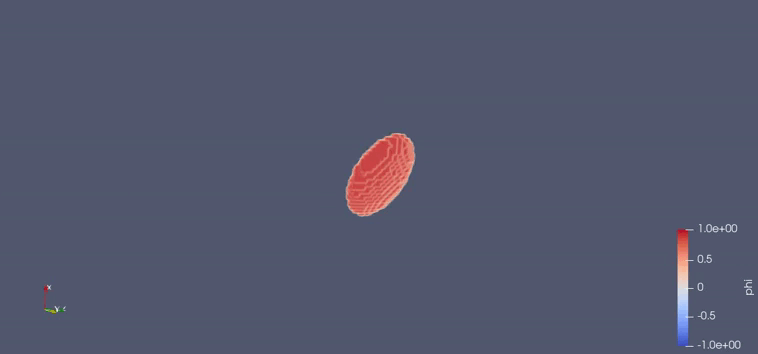Master thesis project -
RBC shape analysis
The study of the rheological properties allows us to determine if cells are carrying out their functions properly. The cell membrane greatly influences the dynamics of Red Blood Cells (RBCs), specifically the deformation and transport properties. Some blood-related diseases, such as malaria or sickle cell anaemia, act in developing membrane alterations, where rigidity and shape play a vital role.

Mixed of healthy cells and cells affected by sickle cell anaemia
In this project, a three-dimensional (3D) phase-field model coupled with incompressible Navier-Stokes fluid is implemented in order to study the deformation of a RBC under different flow conditions.

RBC shape evolution under specific Poiseuille flow conditions
The full code is implemented in Python. It is based on the resolution of two Poisson equations to solve the velocity of the fluid and an Euler equation to obtain the evolution of the cell shape.
Through this method, a parachute shape can be displayed for high velocities, and a slipper shape is obtained for low velocities, as it happens in these papers: Tomaiuolo-2011, Misbah-2012.

Different simulations of RBCs inside a Poiseuille flow with a cylindrical geometry. On the left, a slipper shape is displayed.
At
right, a parachute shape is obtained. The cells are flowing and evolving through the cylinder, but in these images, the
camera
is fixed on the centre of the Red Blood cells. The difference in the outcome lies in the difference in the velocity
of the fluid; the
higher the velocity, the more parachuting will be observed.
You can explore the code in this github repository: Master thesis project